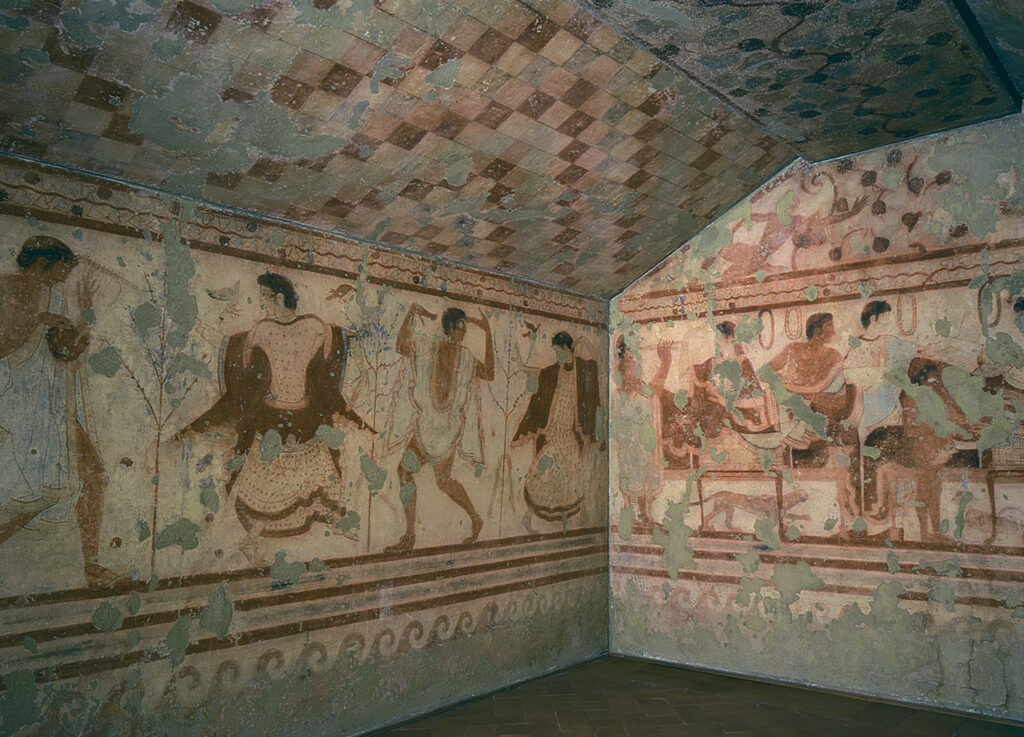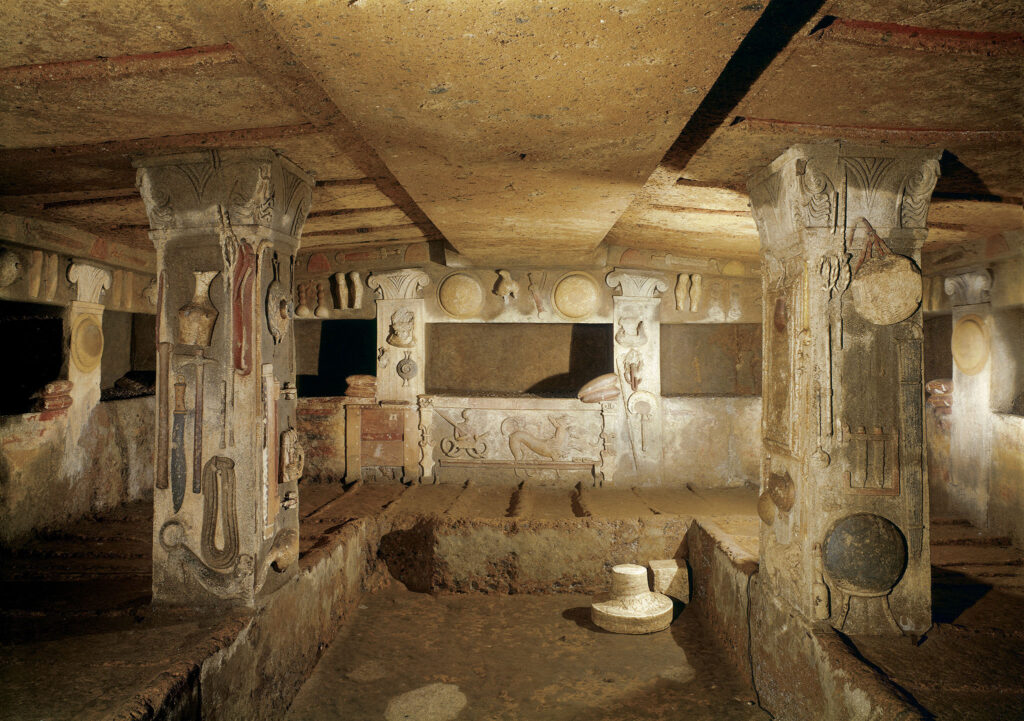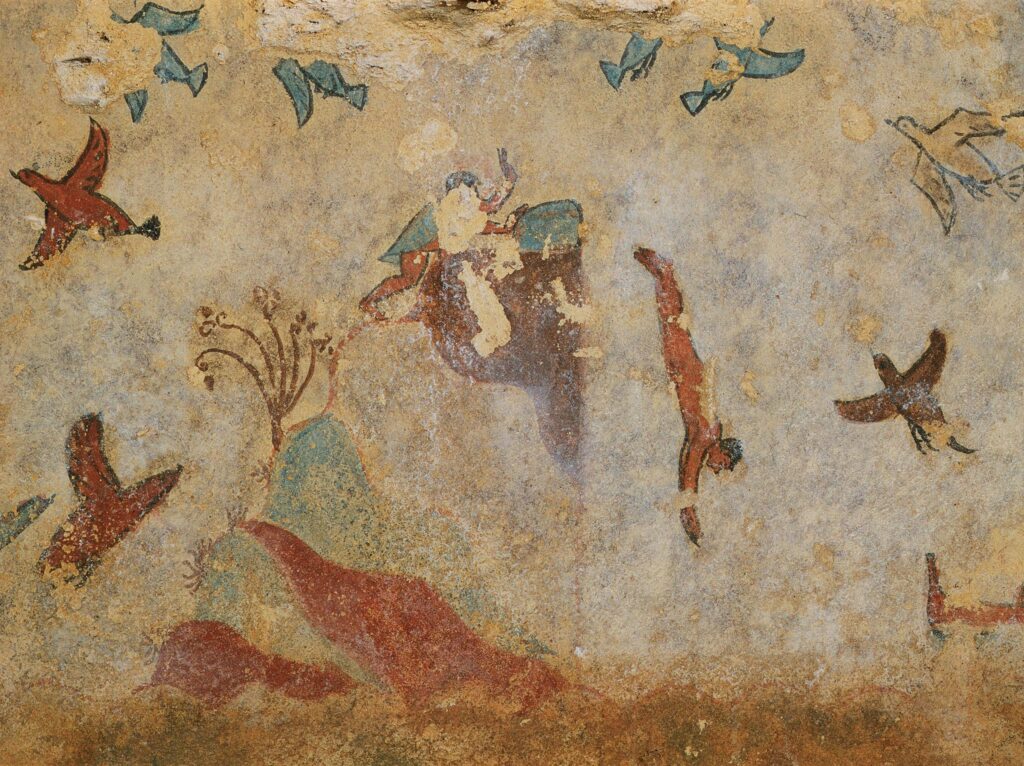What do we Know, or What can we Know, About the Etruscans?

I often think to myself, what will archeologists thousands of years from now think of our society? What materials or records will survive? Will they think the Avengers were our gods? Without the constant chronicles of tweets clarifying the minute-by-minute events of our time, will future historians even be able to understand our cultures with only Stanley Cups surviving?
In my current ancient art history class, I’ve had the opportunity to practice just this: the art of parsing through a civilization with only a handful of material remains. While the Renaissance gives us writing, records, and testimonials, the ancient world is far more enigmatic. You have to look through their ruins and sparse artifacts and simply hope that the tablets you discover are bureaucratic records and not some ancient fictional novel. One of these particularly mysterious groups are the Etruscans. Inhabiting the Italian Peninsula in a wide swath of territory stretching all the way from the Po River in the north to the Campania region in the south, the Etruscans are the direct predecessors of the limelight-stealing Romans. It’s really unfair, because while the Etruscans have a vibrant and culturally-rich society, our far deeper knowledge of the Romans and their world-shaking accomplishments have really overshadowed their Etrurian predecessors. Nevertheless, we are still able to render a remarkable view of Etruscan civilization through an amazing resource, their tombs!
The Etruscans seemingly built their partially or entirely underground burial chambers to resemble their homes, much like the ancient Egyptians across the Mediterranean. These tombs were even laid out in a grid–like pattern with streets between them, forming what are known as necropolises (Greek: Nekros (dead) + Polis (city) = “city of the dead”). Inside these tombs are what scholars believe to be remarkable views into their lives and beliefs. Since these chambers were designed to resemble the homes of the living, many of them include carved-stone depictions of everyday items and possessions. In one of the most famous burial chambers, the Tomb of the Reliefs, the apartment-like room is furnished with carvings of everything from couches and axes to jugs and pots. These perishable objects are often lost to time, so having stone carvings of them are an invaluable way to analyze the everyday possessions Etruscans used and lived with.

While the three dimensional furnishings shed light on the Etruscans’ mortal lives, the wall frescos give us insight into their views on the afterlife. Spoiler alert: they are surprisingly optimistic. While many ancient cultures and religions involve judgment and the separation of the good and bad during the transition between life and the afterlife, the Etruscans instead focus on the joyful aspects of life after death. The colorful and bright imagery is ripe with depictions of feasting, partying, dancing, fishing, hunting, and playing. In one fresco from Tarquinia, two boys are relaxing in the countryside. They are surrounded by a flock of brightly colored birds as one of them dives into the water. Regardless of your personal views on frolicking in fields, this seems like a very cheerful moment.

These happy and carefree narratives share with us a powerful message on Etruscan spirituality. While we in the present can only infer the views they held close (it could’ve all been copium for all we know), historians and scholars can assume via the rich imagery consistent in Etruscan tombs that their culture regarded the afterlife optimistically. Even if they experienced the hardships and challenges other cultures of their time also faced, the Etruscan people possibly still held a strong morale and a well-rendered view of a deservingly-leisurely and joyful afterlife.
All images were sourced from: Art History, Sixth Edition, Volume One by Marilyn Stokstad and Michael W. Cothren
All information researched was sourced from Art History, Sixth Edition, Volume One by Marilyn Stokstad and Michael W. Cothren